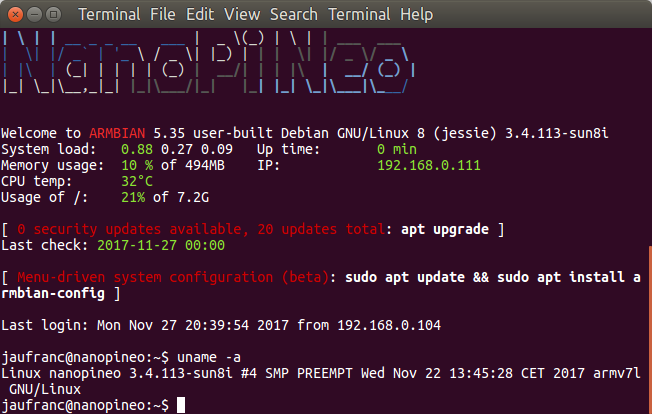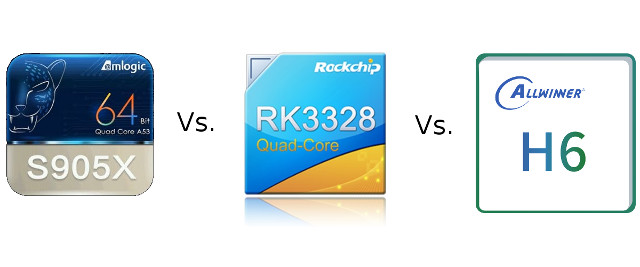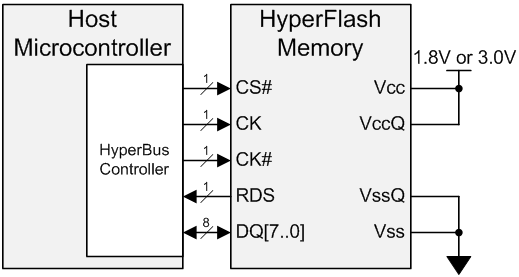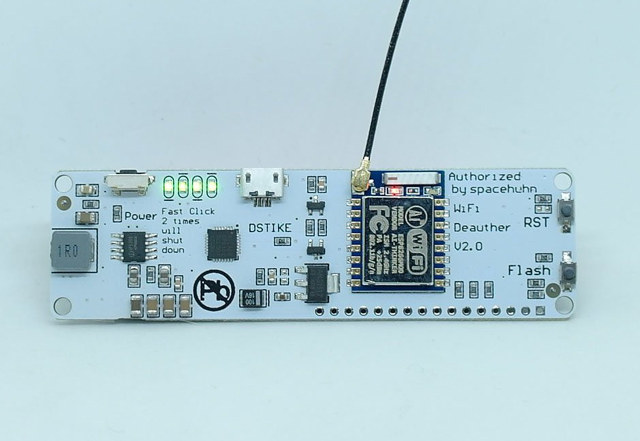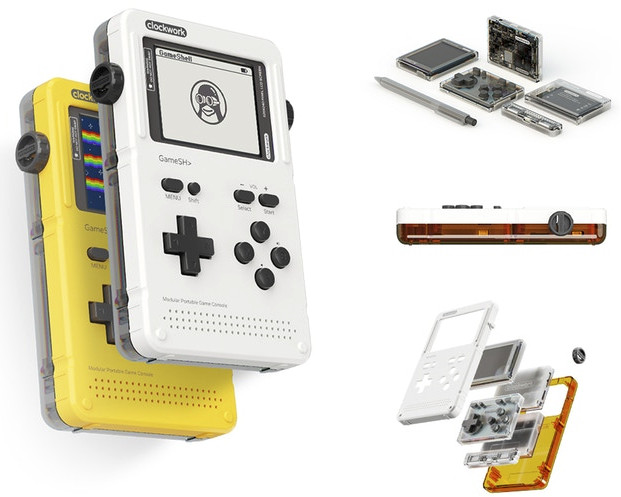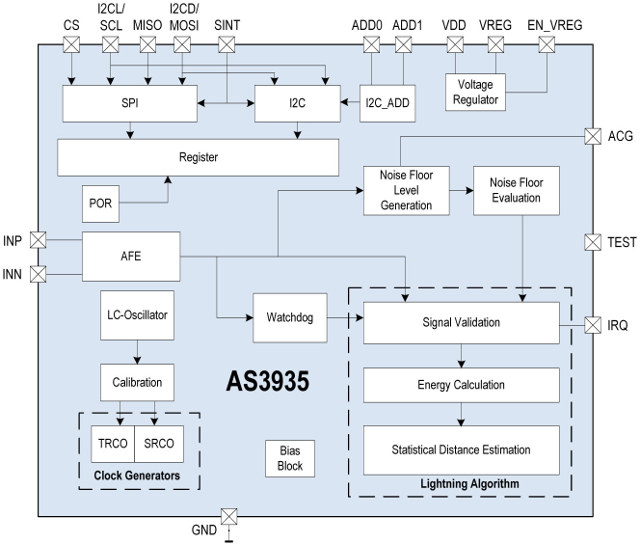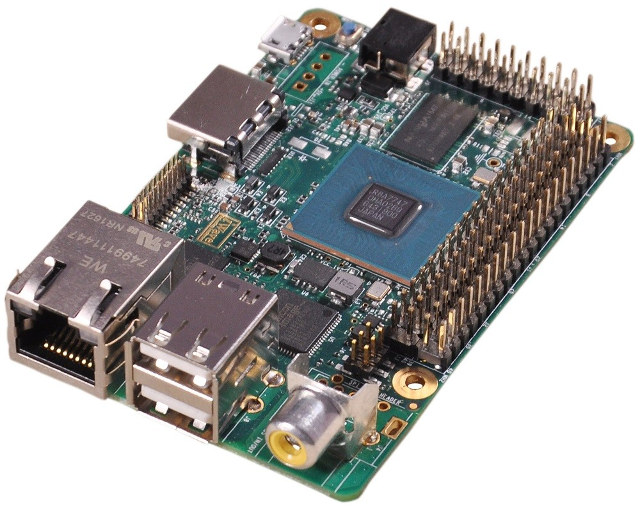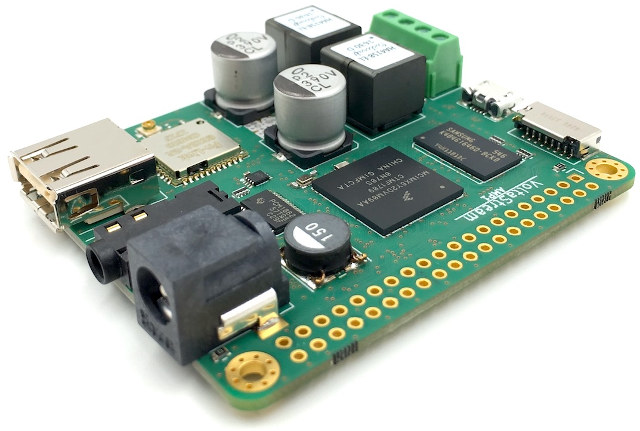Armbian v5.35 has been released last Friday as a major update that brings Linux mainline kernel to version 4.13, U-Boot mainline to version v2017.09, adds support for 7″ Raspberry Pi display, Realtek WiFi drivers (mainline), and new stable hardware support for NanoPi Duo, Pinebook, and Orange Pi R1. Some other boards got experimental support, including Le Potato, NanoPi NEO 2, Orange Pi Zero Plus, Orange Pi Zero Plus 2 (H5). The desktop version of the images gets a full featured XFCE terminal, OpenVPN connector, a new wallpaper, and various other changes and fixes. armbian-config is normally used to configure the board for example networking configuration, but the utility has become even more useful with support for Hotspot, Bluetooth, SSH server configuration, swtich between stable & beta builds and between kernel applications, adds the ability to start an RDP server, and install third party software such as SAMBA, OpenMediaVault, PiHole, Transmission […]
Amlogic S905X vs Rockchip RK3328 vs Allwinner H6 Processors – Benchmarks & Features Comparison
Rockchip, Amlogic, and Allwinner are all battling for the lower and mid-range segments of the TV box market, so it may be interesting to compare their solutions. We won’t look into the ultra low-end market with 32-bit ARM Cortex A7 processor, but instead compare some of the recent quad-core 64-bit ARM Cortex A53 processor for 4K HDR TV box from the company with respectively Amlogic S905X, Rockchip RK3328, and Allwinner H6 SoCs. We’ll compare some of the benchmarks obtained with Android TV boxes, as well as other features like video support, USB, and Ethernet interfaces. S905X vs RK3328 vs H6 Benchmarks Let’s start with results for popular Android benchmarks: Antutu 6.x, Vellamo 3.x, and 3DMark Ice Storm Extreme v1.2 with results obtained from 3 TV boxes: Mini M8S II (Amlogic S905X), A95X R2 (Rockchip RK3328), and Zidoo H6 Pro (Allwinner H6). A score is highlighted in green is there’s a […]
Octo SPI / HyperBus Interface is Designed for High Speed Serial Flash, RAM, and MCP
So far, if you needed high speed storage with low pin count in your MCU based board, you could use QSPI (Quad SPI) NOR flash, but earlier this month I wrote about STM32L4+ MCU family, which added two Octo SPI interfaces. I had never heard about Octo SPI previously. Those two interfaces can be used with single, dual, quad, or octal SPI compatible serial flash or RAM, and support a frequency of up to 86 MHz for Octal SPI memories in STM32L4+ MCU. STMicro OctoSPI interface also supports Cypress/Spansion Hyperbus mode to connect to HyperFlash or HyperRAM chip, or even HyperFlash + HyperRAM Multi-Chip packages (MCP), and variable or fixed external memory latency as defined by the Hyperbus protocol specification. The latter reveals Hyperbus supports performance up to 400 MB/s (provided the controller support 200 MHz), and relies on either 11 bus signals using 3.0V I/O (Single-ended clock CK), or […]
Cheap Evil Tech – WiFi Deauther V2.0 Board and Autonomous Mini Killer Drones
Most technological advances usually improve life of people, and with the costs coming down dramatically over the years, available to more people. But technology can be used for bad, for example by governments and some hackers. Today, I’ve come across two cheap hardware devices that could be considered evil. The first one is actually pretty harmless and can be use for education, but disconnects you from your WiFi, which may bring severe physiological trauma to some people, but should not be life threatening, while the other is downright scary with cheap targeted killing machines. WiFi Deauther V2.0 board Specifications for this naughty little board: Wireless Module based on ESP8266 WiSoC USB – 1x Micro USB type changed, more stable. Expansion – 17-pin header with 1x ADC, 10x GPIOs, power pins Misc – 1x power switch, battery status LEDs Power Supply 5 to 12V via micro USB port Support for 18650 […]
Gameshell Portable Retro Gaming Console Features Clockwork Pi Allwinner R16 Board (Crowdfunding)
Allwinner R16 with its lowly four Cortex A7 cores and Mali-400MP2 GPU would not normally come to mind when designing a gaming console. But Nintendo used the R16 processor twice in their retro gaming consoles: NES Classic and SNES Classic Edition. Clockwork, a startup based in Hangzhou, China, decided they could also do gaming console with the processor: Gameshell. But their product is quite different, as it’s both a portable console with 2.7″ display, and a development platform with the console based on Clockwork Pi development board, and an Atmel AVR (Arduino) based keypad board. Gameshell specifications: Clockwork Pi development board SoC – Alwinner R16-J quad core Cortex A7 processor @ 1.2 GHz with Mali-400MP2 GPU System Memory – 512MB or 1GB (in future revision of the board) Storage – 1x micro SDHC slot Video Output / Display I/F – 18-bit RGB display interface, micro HDMI (planned in revision of […]
Detect Lightning with Those AMS AS3935 “Thunder” Boards
Launched in 2012, AMS AS3935 Franklin lightning sensor is – at its name implies – a lightning sensing IC. The chip was designed for low power, portable or fixed wire-line applications, and beside detecting electrical emissions from lightning activity, it can also provide an estimation of the distance to the head of the storm from 40km away down to 1km, while filtering out other signals from motors, microwave ovens, etc… The chip interfaces via SPI or I2C to the host processor / micro-controller, and comes in a small MLPW-16 (4x4mm) package. Price is $3.55 per unit for 1k orders. Applications include wearables, golf carts, pool safety, portable GPS, bike computers, weather stations, uninterruptible power supplies, smart grid systems, environmental monitoring systems, etc… Basically, AS3935 can be used either for weather monitoring, or safety applications. I’ve found two maker boards with the chip: MikroElectronika Thunder Click board compatible with MikroBUS socket […]
Compact Renesas RZ/G1C based ARM Linux Single Board Computer Exposes 100 Expansion Pins
iWave Systems has released a new business card sized single board computer (SBC) with iW-RainboW-G23S, which looks somewhat similar to a Raspberry Pi 3 board, but is equipped with Renesas RZ/G1C single or dual core ARM Cortex A7 processor, up to 2GB RAM, Gigabit Ethernet, and provides plenty of I/Os through 3 headers for a total of 100 pins. Target applications include HMI & access control, industrial control, healthcare devices, point of sale, IoT, home & office automation, and white goods & appliances. iW-RainboW-G23S board specifications: SoC – Renesas RZ/G1C Dual/Solo ARM Cortex-A7 processor @ 1.0 GHz with PowerVR SGX531 3D GPU System Memory – 512 MB DDR3 (expandable up to 2GB) Storage – 2MB SPI Flash (expandable), 8GB eMMC Flash (expandable), and micro SD connector Video Output/Input – 1x HDMI output port, 1x CVBS input RCA jack, optional 1x CVBS output RCA jack/header Video – HD encode/decode Connectivity – 100/1000Mbps […]
VoltaStream AMP1 Linux Audio Board Includes a Stereo Audio Amplifier, Adds WiFi and Bluetooth
Last summer I wrote about VoltaStream ZERO an audio board powered by NXP i.MX6ULL processor, with up to 1GB RAM, a Texas Instruments DAC, and leveraging Raspberry Pi Zero form factor. The board runs a custom Linux distribution called PolyOS built with the Yocto Project, and including shairport-sync, librespot, SqueezeLite, a DLNA renderer, and more. Polyvection, the company behind the project is now back with VoltaStream AMP1 audio development board, with half the board very similar to VoltStream ZERO, and the other half featuring an audio amplifier, and a wireless module for WiFi and Bluetooth. VoltaStream AMP1 board specifications: SoC – NXP i.MX6ULL ARM Cortex-A7 processor @ 996 MHz System Memory – 512 MB DDR3 Storage – micro SD card slot Audio 1x I2S for integrated DAC and AMP, 1x I2S for GPIO access, 1x TOSLINK-IN jack Analog DAC – Texas Instruments PCM1862 (SNR 103 dB) Amplifier – ISSI IS31AP2121 […]


